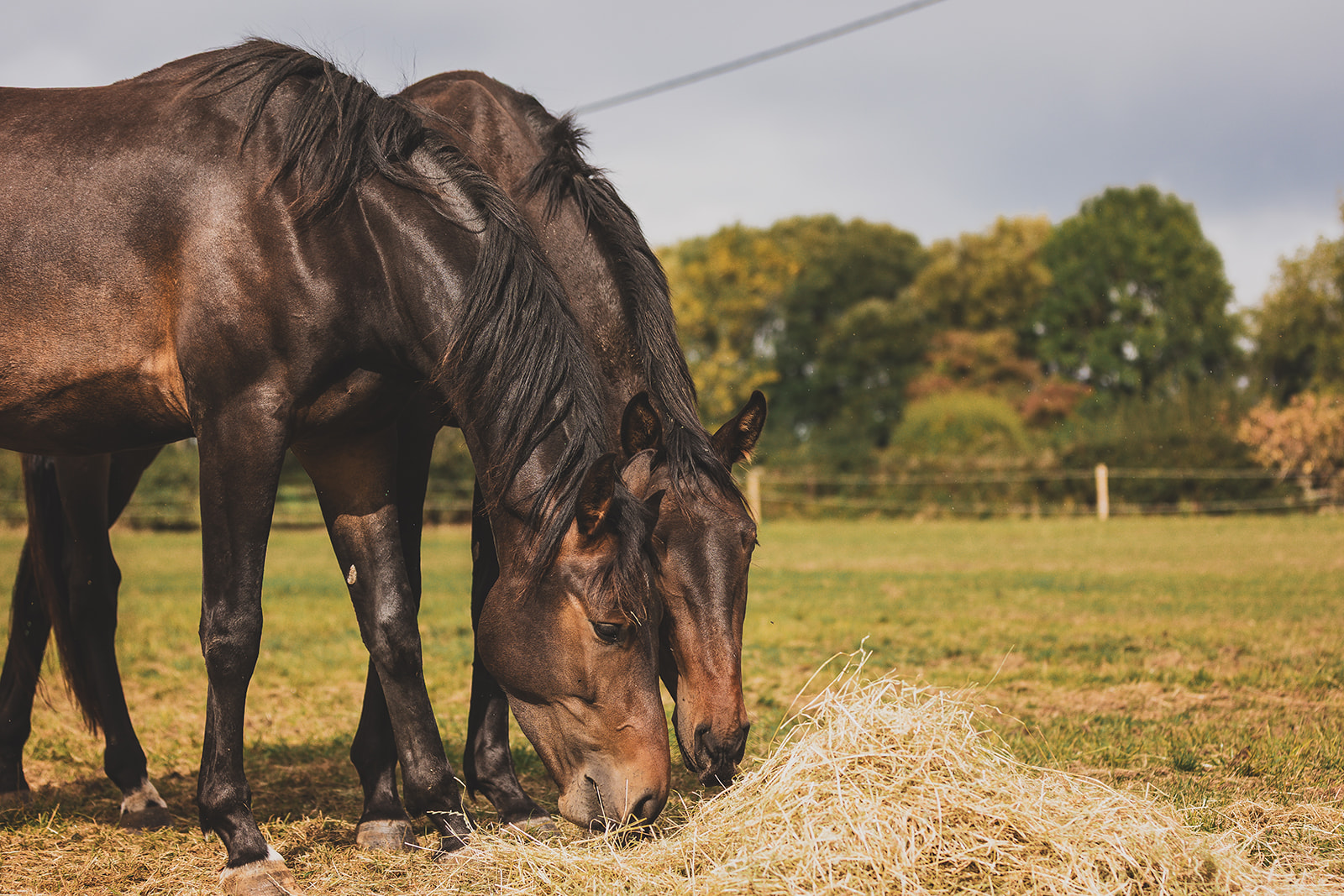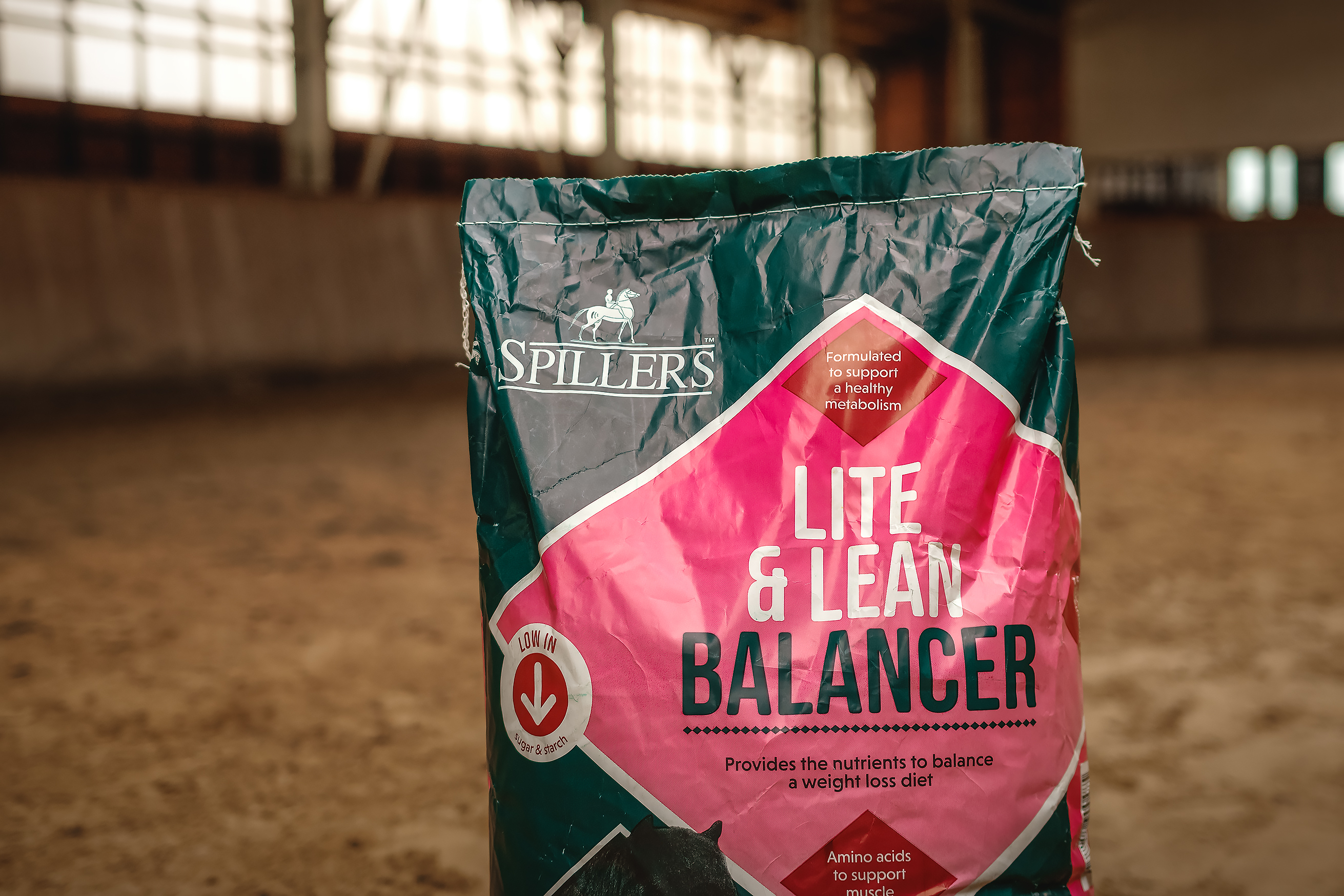Using Winter Wisely – How to make the most of winter with your good doer
With nights drawing in and some owners at the yard reaching for extra rugs and cramming haynets, when is the time to make changes if you have a good doer? If you’ve got a horse who could do with losing several kilos, hold fire with those rugs a bit longer and have a read of our advice around using winter wisely to help your horse stay healthy.

Winter: Nature’s weight loss plan
It’s common practise among us loving horse owners that as we start to feel the chill, we feed our horses more through the cold months. But consider the horses and ponies living on the hills and moorland in the UK as they struggle to find enough forage in the depths of winter. Wild winters are hard, wild animals without shelter need to gain a significant fat layer to keep them warm. These fat stores supply them with energy through the tough months, and they emerge from winter far leaner just as spring reappears to help them flourish again.
But what does this mean for our pampered, domesticated horses who don’t fluctuate their weight in this extreme way? Well, over a third of horses in the UK may be obese. Those with a body condition score of 7/9 or above are classed as obese (click through to our BCS pages here to help score your horse). Winter is the perfect time to let your horse slim down and get back into healthier condition as Mother Nature intended.

Rugs are not the only insulator
Similarly to your home, overweight horses have plenty of insulation to help them stay warm even at low temperatures. Forage digestion acts as their central heating system, creating plenty of heat which is double insulated by their fat stores and their thick winter coats.
Few horses, especially natives, with a thick winter coat and access to forage need rugging until temperatures reach low single digits (below 5°C). That said, all horses are individual, and never leave your horse shivering in wild weather without some shelter.
On cold, sunny days, consider skipping the rug for horses with thick coats. Studies show that rugs can make horses warmer than we think. If you do rug up, choose the lightest option that suits your horse. And here’s a tip: to check if your horse is really cold, feel their armpit—not just their extremities like ears or nose!

Time to clip?
For those seriously obese woolly horses, consider clipping their belly or under the neck to help weight loss. Again, don’t clip your horse completely and then leave them out in a blizzard! There’s a balance to be had.
Keep them moving!
Provide your good doer with as much exercise and turnout as possible to keep them mobile. Be mindful just how much grass you have. An abundance of long grass even in the winter months can still oversupply their calorie requirements of good doers. Just because its winter doesn’t mean there’s ‘nothing’ in it. If you have plenty of grass you could even continue to muzzle or strip graze your paddocks, especially if the winter is mild and the grass keeps steadily growing or you’re utilising resting paddocks.
Smart Feeding: Quantity over calories
Instead of being super strict about how much your horse eats, focus on reducing total calorie intake. Offer low-calorie forage, like soaked hay (to lower sugar and calories) or you can mix in up to 50% straw. Straw is fibrous and takes longer to eat—plus, it’s lower in calories so a win: win in many cases! Just make sure your horse’s teeth are healthy and they have no history of colic before feeding straw and always introduce it slowly to allow the digestive tract time to adapt.

Beat Boredom: Make forage last longer
Extending eating time is especially useful for those who are spending longer stabled, scoffing their haynets rapidly and going longer without eating. Horses have an innate need to chew, not only does it help prevent boredom, but it also supports digestive health by increasing saliva production. Saliva is the horses first form of defence in buffering stomach acid.
A recent study showed two or three portions of hay placed round the stable in part filled double layered small holed nets, significantly increased eating time rather than one large full net. Consider this practical option if you have a speedy eater. Look at slow feeders for their meals and ground feeders for the field too.

Balanced Diet: Don’t skip the essentials
Whether summer or winter, feeding a good doer a balancer like SPILLERS Lite & Lean Balancer is a great way to ensure a nutritionally balanced diet full of all the vitamins, minerals and quality protein sources they need. Balancers are fed in tiny amounts so to bulk out their meals add a double handful of low-calorie chaff such as SPILLERS Fibre Lite Molasses Free for increased chewing and more satisfaction. You could try a cup of low-calorie SPILLERS Speedy-Mash Fibre made extra sloppy to keep them occupied for a bit longer.
Work as a team
Often during winter owners spend reduced time at the stables, speak to other owners and see if you can work out a rota so all the horses can be fed a little later. This benefits all horses on the yard as it reduces the time spent overnight without forage.
Use your head, not the calendar
There’s no one-size-fits-all rule for winter horse care. Consider your facilities, base their diet on their body condition and individual needs. Winter is a fantastic opportunity to help your good doer get healthier—so use it wisely!
